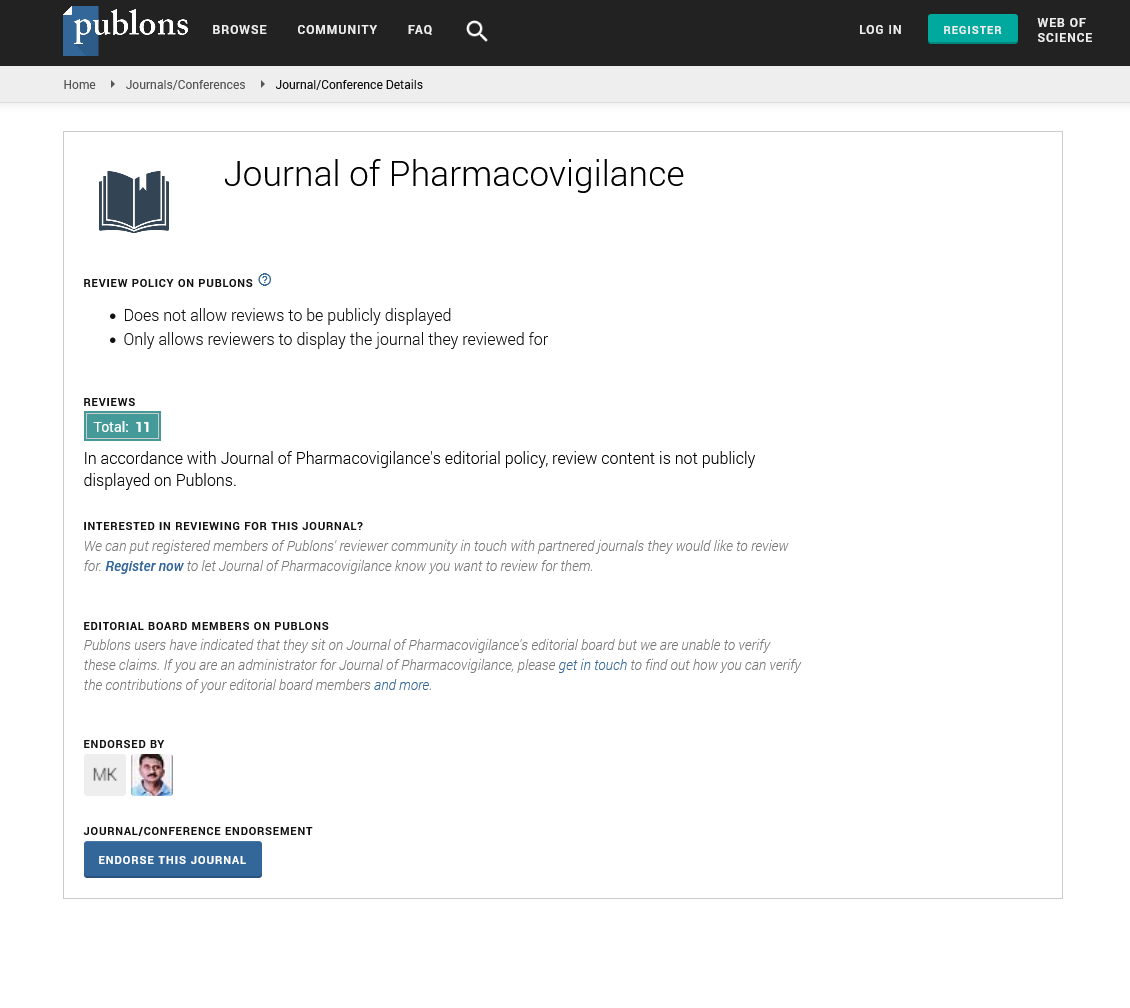Indexed In
- Open J Gate
- JournalTOCs
- The Global Impact Factor (GIF)
- RefSeek
- Hamdard University
- EBSCO A-Z
- OCLC- WorldCat
- Publons
- Euro Pub
- Google Scholar
Useful Links
Share This Page
Journal Flyer

Open Access Journals
- Agri and Aquaculture
- Biochemistry
- Bioinformatics & Systems Biology
- Business & Management
- Chemistry
- Clinical Sciences
- Engineering
- Food & Nutrition
- General Science
- Genetics & Molecular Biology
- Immunology & Microbiology
- Medical Sciences
- Neuroscience & Psychology
- Nursing & Health Care
- Pharmaceutical Sciences
Screening for depressive symptoms in patients with diabetic foot using (CES-D) scale: A cross-sectional study
11th International Conference and Exhibition on Pharmacovigilance & Drug Safety
June 21-22, 2018 | London, UK
Mervat Alsous, Feras Darwish Elhajji, Ghada Abu Amara, Eman Elayeh, Amal Akour and Ayman Mismar
Applied Science Private University, Jordan
University of Jordan, Jordan
Scientific Tracks Abstracts: J Pharmacovigil
Abstract:
The aim of this study was to assess levels of depressive symptoms present in patients with diabetic foot. A convenience sampling method was used to recruit 108 patients with diabetic foot. After having completed the Center for Epidemiologic Studies Depression Scale (CES-D), patients' demographic data and medical history were collected using pre-structured forms. Of the entire sample, 38.9% have CES-D score â?¥27 which indicates risk for major depression. Logistic regression analysis showed that retinopathy was significantly associated with increased depressive symptoms among diabetic foot patients (odds ratio 3.41 (p=0.017)). Being on a combination of oral hypoglycemic agents and insulin treatment was significantly associated with lower depressive symptoms (odds ratio 3.38 (p=0.022)). Patients with primary education level have the highest odds ratio among all factors associated with risk for major depression (OR, 4.07; p=0.003). The risk for major deression among patients with diabetic foot in Jordan is high compared to general diabetic population. This was associated with low educational level, retinopathy and not taking combination of oral hypoglycemic agents and insulin. There is a need for routine screening for depression in patients with diabetic foot to help in the prevention, early detection of depression and even referral to a psychiatrist.

